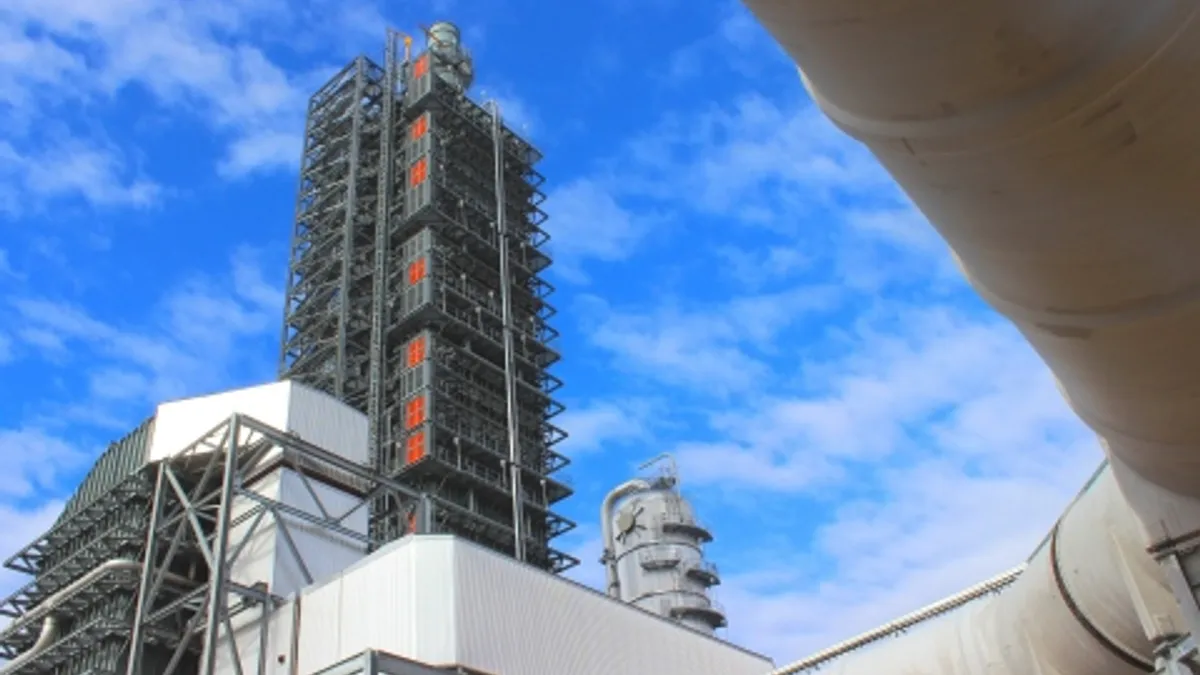Dive Brief:
- NRG Energy and JX Nippon Oil & Gas Exploration have completed development of Petra Nova, a retrofit of an existing coal power plant that is now the world’s largest post-combustion carbon capture system, the Houston Business Journal reports.
- The Petra Nova project pipes captured carbon dioxide to an enhanced oil recovery project 80 miles away, helping boost production while generating revenue for the plant.
- During performance testing, NRG said the system met all criteria including capturing more than 90% of CO2 from a 240 MW equivalent slipstream of flue gas off an existing coal-fueled electrical generating unit.
Dive Insight:
Despite frequent stories about the decline of coal power, 2017 could be a big year for the fuel. Petra Nova represents the first of a pair of innovative projects that aim to show coal can remain profitable while greatly lowering its emissions.
The other project, Mississippi Power's Kemper plant, is a fundamentally different concept: a plant that will turn lignite coal into gas, separate out the CO2 and burn the resulting synthesis gas. But it has the same basic aim: to keep coal power online. That project is moving slowly towards completion as well, but has hit major stumbling blocks by moving deadlines and cost overruns.
NRG President and CEO Mauricio Gutierrez yesterday in a statement called completion of the Petra Nova station "an important milestone in our quest to help ensure reliable, affordable and increasingly cleaner energy from fossil fuels."
By building Petra Nova atop an existing coal unit, NRG believes the project highlights "an economic path to make existing and new fossil fuel plants significantly more environmentally viable." The plant was budgeted at $1 billion. Conversely, the Kemper facility is now running at about $7 billion despite its original budge of $2.9 billion.
Petra Nova first captured CO2 in September, has delivered more than 100,000 tons of captured carbon dioxide to the West Ranch field through an 80-mile pipeline. Final performance acceptance testing on the facility was completed in December. During performance testing, the system met all performance criteria including capturing more than 90% of carbon dioxide. NRG estimates it can capture more than 5,000 tons of CO2 per day, the equivalent of taking more than 350,000 cars off the road.
The Center for Climate and Energy Solutions issued a statement, calling the project "an example of innovative clean energy solutions."
"As with wind and solar technologies, the costs of carbon capture will likely fall as more projects come online," the climate solutions group said. "Leadership in carbon capture technologies also gives the United States a first-mover advantage in a globally important market."
Despite a trend-line unequivocally shows declining coal use, federal officials say it will generate a greater share of the U.S. power mix this year as the cost of gas rises. According to the U.S. Energy Information Administration, coal will generate 31% of the country's power next year, compared with 30% this year. Gas will decline from 34% this year to about 33% in 2017.















